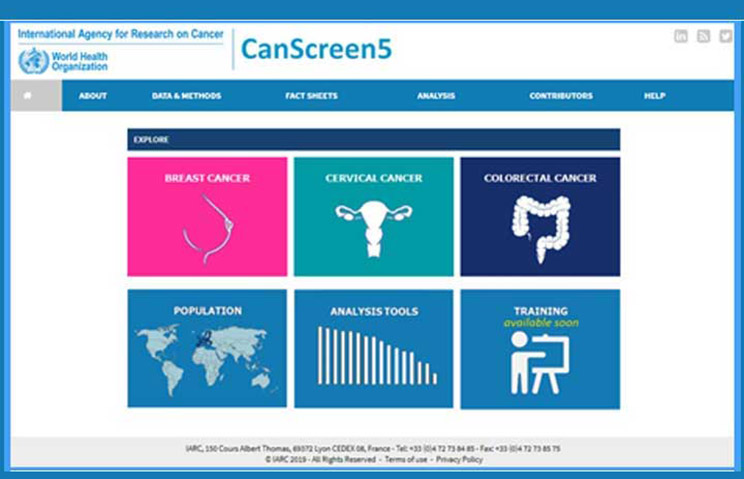More
7 April 2022
Launch of new joint IARC-UICC-AFCRN report: Cervical Cancer Elimination in Africa: Where Are We Now and Where Do We Need to Be?
To mark World Health Day, a new publication was jointly launched today by the International Agency for Research on Cancer (IARC), the Union for International Cancer Control (UICC), and the African Cancer Registry Network (AFCRN).
This new report, Cervical Cancer Elimination in Africa: Where Are We Now and Where Do We Need to Be?, examines the status of current efforts towards elimination of cervical cancer in the African region, as well as necessary steps to achieve in Africa the targets set out in the World Health Organization (WHO) Global Strategy to Accelerate the Elimination of Cervical Cancer.
The authors describe current cervical cancer incidence and survival in Africa, data collection and monitoring systems required to track progress towards the elimination targets, the status of vaccination against human papillomavirus (HPV) and cancer screening programmes, diagnosis and treatment, palliative care, and recommendations to improve access to care and to help countries meet the targets.
The WHO strategy defines the elimination of cervical cancer as a public health problem as fewer than 4 new cases of cervical cancer per 100 000 women per year, based on incidence data calculated from population-based cancer registries. Every country must meet the 90–70–90 targets by 2030 to be on track towards eliminating cervical cancer by the end of this century. These targets are:
- 90% of girls fully vaccinated with HPV vaccine by the age of 15 years;
- 70% of women screened using a high-performance test by the age of 35 years, and again by the age of 45 years; and
- 90% of women identified with cervical disease receiving treatment (90% of women with precancer treated, and 90% of women with invasive cancer managed).
To improve the availability and quality of data from low- and middle-income countries worldwide, the IARC Global Initiative for Cancer Registry Development (GICR) and designated GICR Regional Hubs, including the AFCRN, are developing local capacity for the quality-assured collection, analysis, and interpretation of cancer data for national cancer control action.
“As is highlighted in the new report, robust monitoring systems are needed to track the elimination targets in Africa,” says Dr Freddie Bray, Head of the Cancer Surveillance Branch at IARC. “Monitoring cervical cancer occurrence and outcomes – including incidence and survival – requires a step change in investment in population-based cancer registries through international donor assistance.”
Cervical cancer is one of the most highly preventable and, if diagnosed early, one of the most treatable types of cancer. More than 70% of cervical cancers are caused by infection with HPV, a sexually transmitted infection for which there is an effective vaccine. In addition, current screening modalities can detect precancerous lesions at a stage when they can generally be treated successfully.
Other news

Geographic variation of mutagenic exposures in kidney cancer genomes
Scientists from the International Agency for Research on Cancer (IARC) and partner institutions h...
02.05.2024
Read more

IARC Monographs Volume 134: Aspartame monograph now available
The monograph on aspartame, the first monograph in IARC Monographs Volume 134: Aspartame, Methyle...
29.04.2024
Read more

Launch of CanScreen5 training in francophone African countries
The International Agency for Research on Cancer (IARC) is pleased to announce the launch of the C...
29.04.2024
Read more